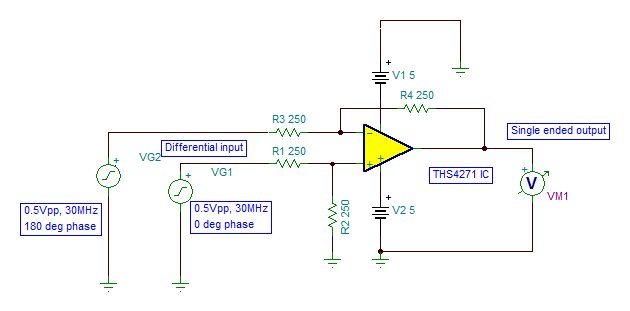Hi,
I was considering using the THS4271 opamp in a differential to single ended (D2S) configuration as shown in the attached snapshot to convert 0.5Vpp differential signals at 30MHz to a single ended one. Can you please say if I can hope to meet the <-90dBc THD spec quoted for the non-inverting mode of operation in the D2S mode too, or if significant degradation may be expected, esp in the even order harmonics which may normally not be expected for differential signals. I was especially curious about the possible degradation in the even order harmonics in this configuration if any
Thanks,
Anoop


